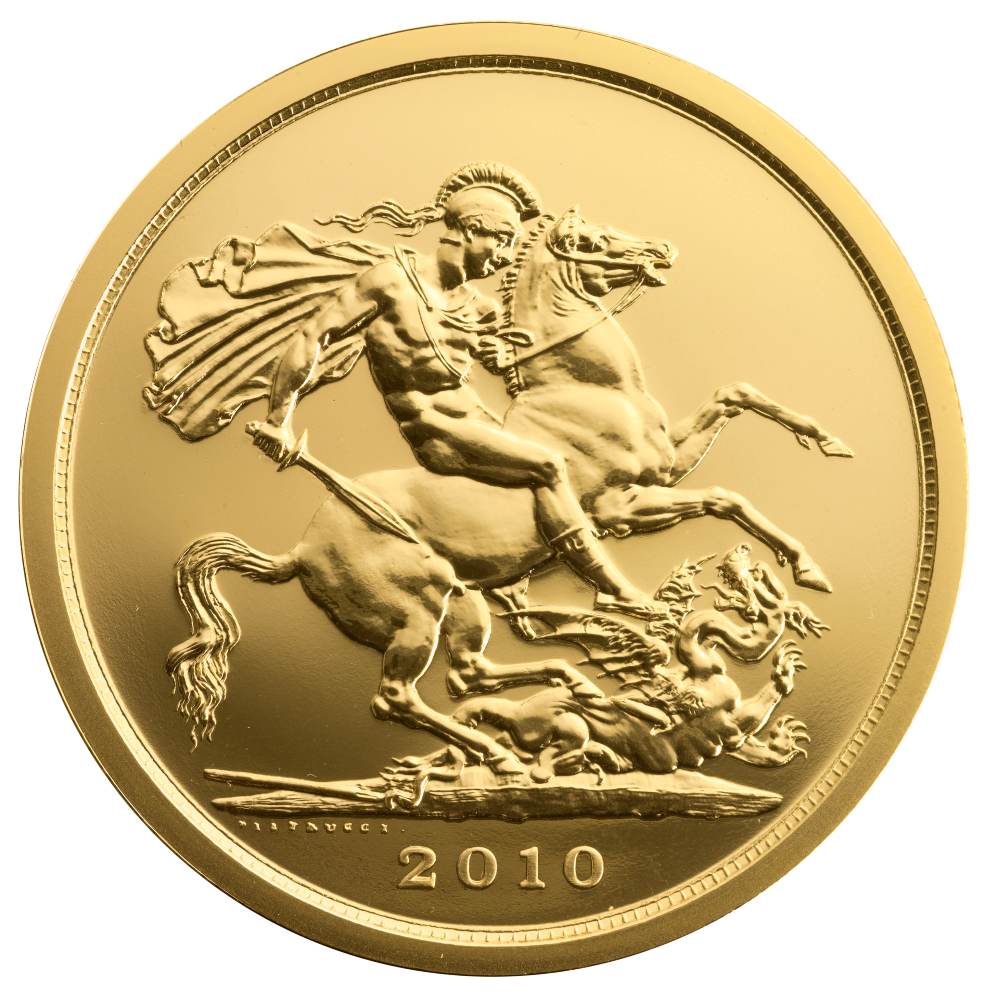As you read this article, a standard, bullion grade gold sovereign is currently worth about £ 312.34 ($ 471.22 / € 388.55 ). However, some sovereigns are worth much, much more than this. This article takes a look at some of the rarest and most valuable sovereigns that exist.
- History of the Sovereign Coins. It was initially the Queen's idea to start producing Sovereigns at source rather than gold from the colonies shipped to London. Australia's Sydney branch of the Royal Mint issued its first Gold Young Head Victoria Full Sovereign on June 23, 1855 and featured a uniquely Australian reverse design.
- Since the dawn of the ‘new' gold sovereign in 1817, collectors across the globe have shared a fascination with these spectacular coins. And with good reason. They all share designs steeped in history - from the prestigious ‘St. George and the Dragon' motif, to the innovative Sydney Mint Sovereign reverse.
The sovereign is a gold coin of the United Kingdom, with a nominal value of one pound sterling.Struck from 1817 until the present time, it was originally a circulating coin accepted in Britain and elsewhere in the world; it is now a bullion coin and is sometimes mounted in jewellery.
An unobtainable sovereign
Probably the most valuable gold sovereigns are those that a collector will never have the opportunity of acquiring, regardless of their budget. The first sovereigns struck following Queen Elizabeth II's accession to the throne were those minted in 1953. Just three four proof coins are know to have been produced, along with accompanying Crowns, double and half-sovereigns. One set resides in the Royal Mint Museum, another with the British Museum and the final set with the Royal collection. As no set has ever been sold, it's impossible to place a value on them. Update Jan 2015: In May 2015, St James's Auctions will be auctioning The Park House Collection. Included in the sale is the only known 1953 Sovereign available to private buyers.
The rarest / most valuable sovereign available to collectors


During George III's reign in 1819, 3,574 sovereigns were struck. Although not the lowest mintage run (that accolade goes to the 1923 Pretoria mint sovereign with just 406 being struck), only 10 examples are now known to exist. As a result of their scarcity, 1819 sovereigns command huge prices when they do come up for sale, even when in relatively poor condition.
On the 8th May 2013, one of the finest examples know to exist was sold at Baldwin's auctioneers. As part of the ‘Bentley collection', it was the star attraction of the auction and sold for a magnificent £186,000 (approx. $289,000).


During George III's reign in 1819, 3,574 sovereigns were struck. Although not the lowest mintage run (that accolade goes to the 1923 Pretoria mint sovereign with just 406 being struck), only 10 examples are now known to exist. As a result of their scarcity, 1819 sovereigns command huge prices when they do come up for sale, even when in relatively poor condition.
On the 8th May 2013, one of the finest examples know to exist was sold at Baldwin's auctioneers. As part of the ‘Bentley collection', it was the star attraction of the auction and sold for a magnificent £186,000 (approx. $289,000).
It is believed that one proof version of the 1819 sovereign exists. However, its whereabouts is currently unknown and has not been seen for over 70 years. Suffice to say, if & when it does re-appear, its value is likely to be well in excess of £250,000.
Other rare and collectable sovereigns
There are many other dates that are rare and collectable. Here is a selection of the more scarce ones:
Sovereign Coin Definition
- 1908 Edward VII Ottawa Mint
- 1924 George V Pretoria Mint
- 1916 George V Ottawa Mint
- 1917 George V London Mint
- 1922 George V Melbourne Mint
- 1926 George V Sydney Mint
- 1921 George V Melbourne Mint
- 1923 George V Sydney Mint
- 1874 Victoria ‘Young Head' Shield
- 1920 George V Sydney Mint
Minting errors
Sovereign Coin Value
When determining their value, it's not just sovereigns that were either minted in low numbers or where few survive today that collectors are interested in. As demand grew for newly minted sovereigns around the mid 19th century, the quality control in the production of new dies began to slip and errors became more common. Sometimes, the number ‘1' in a date would be accidentally substituted for the Roman letter ‘I', or a number ‘4' would be placed upside-down. Only the keen-eyed collector is likely to spot such mistakes, but when found, a minting error can significantly increase the value of a coin. Take for example the 1880 Sydney mint shield sovereign. An easily obtainable date at standard sovereign prices for its age. However, if the word ‘VICTORIA' on the obverse (heads) side uses an upside-down letter ‘A' instead of a ‘V', you could be looking at a 5-figure value!
Comments
Sovereign Coin Necklace
| ||||||||||||||||||
A circular gold coin (22 mm diameter with milled edge) featuring a bare head of George V facing left; below, the artist's initials B.M.; around, GEORGIVS V D.G. BRITT: OMN:REX F.D. IND:IMP:. On the reverse St. George on horseback holding short sword and wearing a helmet, cape and boots, the horse rearing over dragon whose side is pierced by a broken lance, the haft of the lance is on the ground behind the horse; the date, 1916 and artist's initials B.P. in exergue; the mint mark (if any; coins minted at the Royal Mint in London do not have a mint mark) in ground line above middle of date. | ||||||||||||||||||
| ||||||||||||||||||
| ||||||||||||||||||
| ||||||||||||||||||
| ||||||||||||||||||
| ||||||||||||||||||
| ||||||||||||||||||
|

